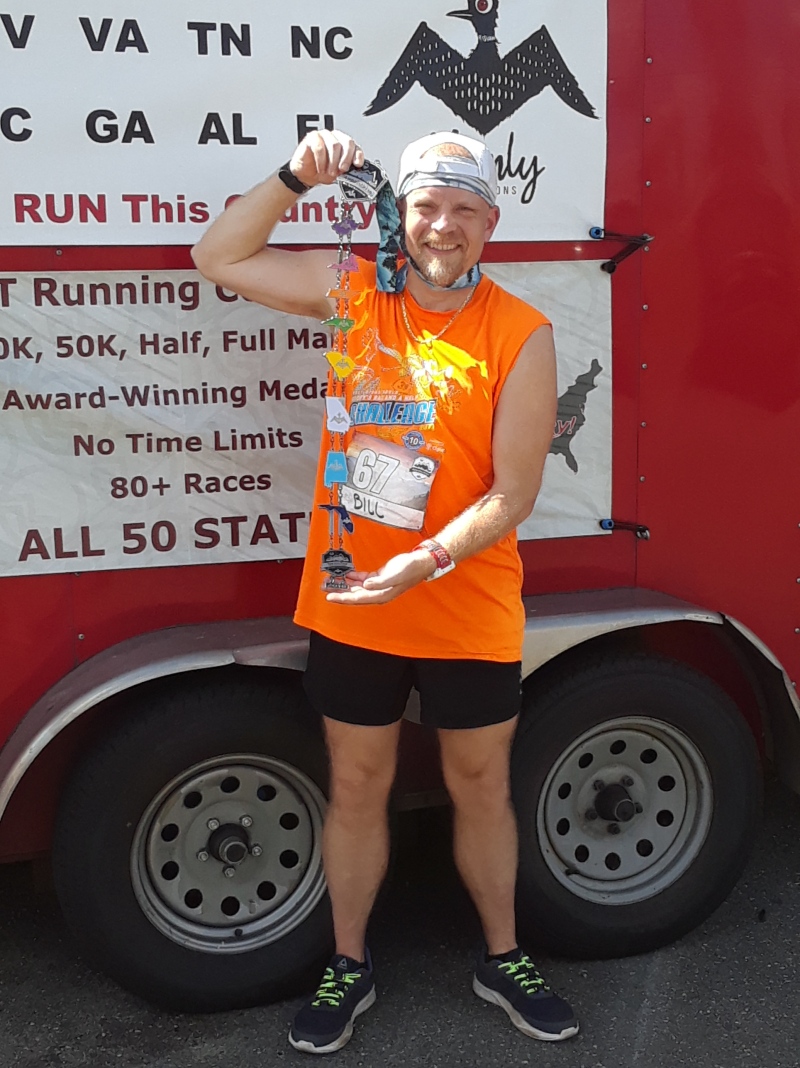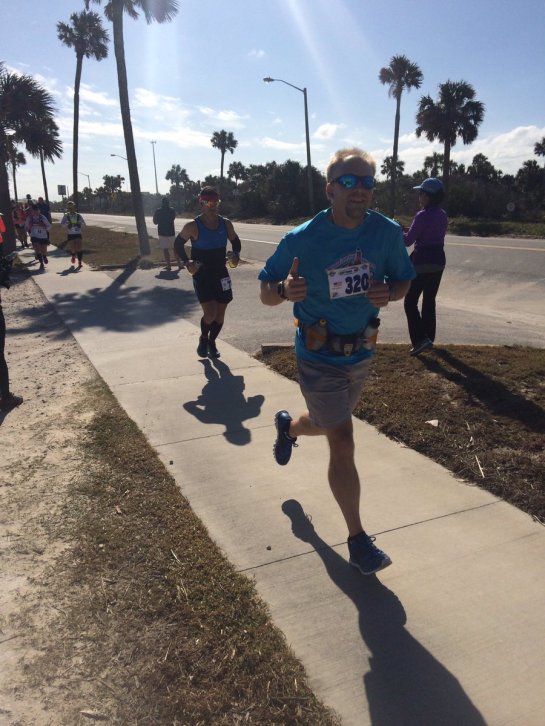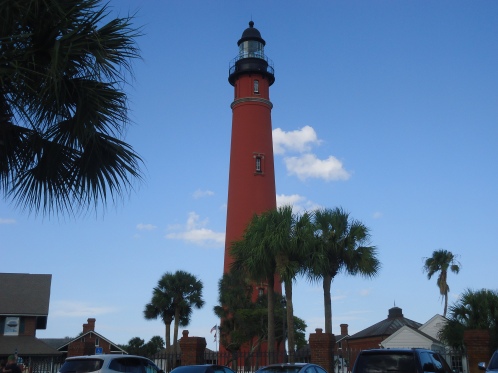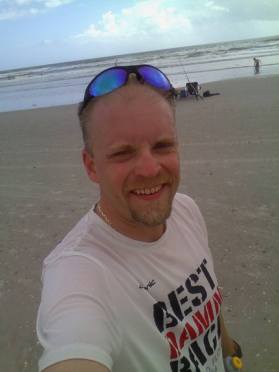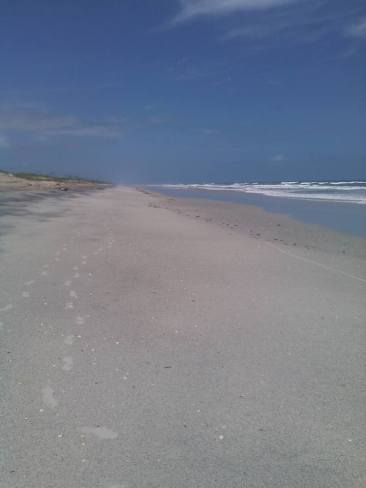As a kid one of my favorite things to do was to complete a jigsaw puzzle where the pieces were the 50 US states. Basically, I was putting the country together and traveling on an imaginary level at the same time. At age 44 I discovered the joy and excitement of running. Last week I managed to combine the travel and running on a level I never imagined possible. I spent 8 days with the Loonies known as Mainly Marathons.
My original plan for early fall was to take a week off from work and spend as much time as possible running, estimating 120 miles over 9 days. This plan was designed to be a heavy-duty training week to gauge my progress toward my goal event in December: Seven 50k races in seven days. I know myself well enough to know that I’d probably shorten my runs and use the week as an actual vacation. Appealing to most, but not what I needed. I had heard about Mainly Marathons, so I decided to see what their calendar looked like. It just so happened that their Appalachian series was scheduled for the week before my planned vacation. After checking on all the details, I signed up for the entire series. 8 marathons in 8 different states over 8 days. Traveling, running, challenging myself, and an awesome way to test my fitness level for the 50k races that are just 10 weeks later.
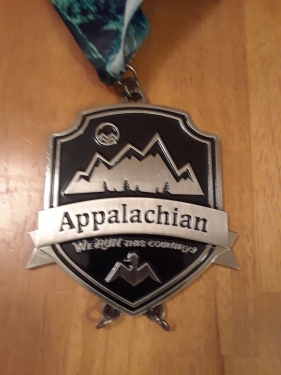
Base Appalachian series medal
To prepare for the eight consecutive marathons I developed a training plan that consisted of running 5 days one week and 7 days the next week to build up endurance and increase my ability to recover. Weekday runs increased from 5 miles to 10, and weekend runs from 9 miles to 20. Weekly mileage ranged from 32 miles to 75. My heart rate was consistently decreasing and I was seeing several signs that told me that I really had a chance of completing this challenge. For the first time in a long time I was getting nervous and excited about the challenge I was about to face.
On Friday, October 4th I left Orlando at 6am, driving through many of the states I was about to run in. 11 ½ hours later I arrived at the first race site to pick up my race bib and take a quick look over the area where I would run the first two of my marathons. The Bluefield City Park is located on the Virginia/West Virginia border and the racecourse is partly in each state, so the same course can be used as a race run in two different states, as long as it’s two different races.
Saturday morning came quickly. I arrived at the park not sure exactly what was in store for me, but ready to tackle the challenge. Just before the race started, Daniel gave instructions about cones, loops, rubber bands, and a bell. Alright, not your typical marathon, but this didn’t feel like any marathon I’d ever run before. There were around 75 runners between the marathon, half, 5k, 10k, and 50k, and they were all running the same course from end to end. The course was about 1.1 miles to the turnaround point, and then back the same way to the start and grab a rubber band. Having 12 rubber bands means you’ve completed at least 26.2 miles.

West Virginia and Virginia
The part of the course that I hadn’t yet seen had 14 hills per loop. At least for someone from central Florida they were hills. I ran up four of those hills per loop and walked the other ten for most of my loops. For a single marathon I would have made more of an effort to crush the hills, but I have eight of these to tackle back to back. Saturday’s finish time was 5:29 and on Sunday I improved by three minutes to 5:26. Although this was the first time that I had run marathon distance on consecutive days, the easy part of my challenge was behind me. I still had six more marathons to complete.
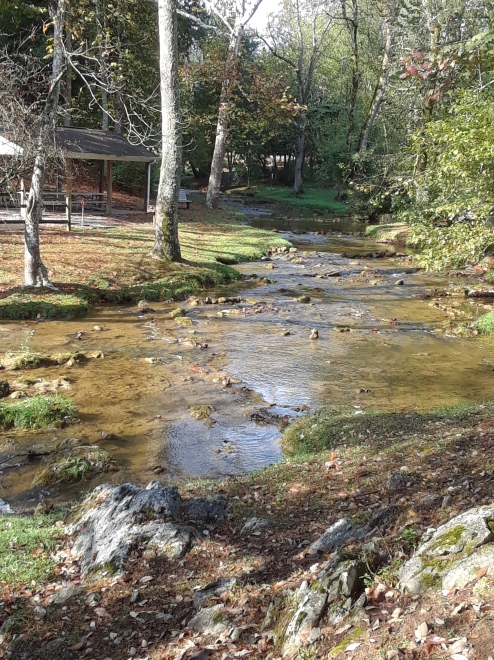
Along the course in Bristol, Tennessee
Following the second race of the series in Bluefield, I grabbed some lunch and jumped on I-81 south to the Virginia/Tennessee border. The third race was in Bristol, Tennessee at Steele Creek Park. The majority of this course followed the shores of Steele Creek Park Lake and had a similar setup as the first two days: 1.1 miles out, turn around, 1.1 miles back for each loop. This day’s course, though, was much flatter, which I needed since I had already covered about 2,700 feet of elevation in the first two days. That’s more elevation than I typically run in a year of training runs! My legs didn’t feel like moving quickly, so I took my time and finished this marathon in 5:51. This would be my slowest race of the entire series.

Tennessee and North Carolina
Again, immediately after the race I found some lunch in Bristol and hit the highway. The next race was in Fletcher, North Carolina. I found my hotel and took a drive to the race site to be sure I wouldn’t get lost in the morning. The course took us for 12 loops on a nice, shaded, mostly flat path. For me, the first half was perfect running weather, but the second half was in a steady rain. Overall a very nice course to run at the Fletcher Community Park, and I ran my fastest marathon of the series at 5:07. That’s over an hour off of my PR, but it’s also the first time I have ever run 100 miles in a week, and I did it in just four days. I had just completed my first Quadzilla!
Day five brought the return to hills! The hills on the course at the Shaver Recreation Complex in Seneca, South Carolina were not as steep as the hills from the first two days, but the elevation gained for day 5 was still over 1200 feet. This course wrapped around several baseball fields and was a little shorter than the previous courses, which means more loops. 14 loops of this course took my Garmin to 26.78 miles and the completion of my fifth consecutive marathon (5:29) in five different states. I’m not much of a social butterfly but I was starting to get to know a few of the people I had been running with every day, but I still had little knowledge of how incredible these people really are. More on that in a minute, but first, we’re off to Georgia!

South Carolina and Georgia
The marathon for day six was held at Amerson River Park in Macon, Georgia. This course was 12 loops with only a couple of small hills, and I managed to finish in 5:15 for my second-fastest time of the adventure. During this race it was becoming more obvious that we were moving further south every day since it was getting hot earlier in the race. I was also starting to feel some pain in the middle of my back and the tops of my feet. I was using a foam roller between races and a couple of people had recommended getting CBD oil. The roller seemed to be helping some to get me through the first half of races, but even the CBD oil wouldn’t stop the back issues in the second half. I just had to walk a little more and get through it.
Day seven presented a new obstacle that I was able to successfully navigate – a new time zone. The race was held on the Yoholo-Micco trail in Eufaula, Alabama, approximately a tenth of a mile from the Georgia border. The first two loops were finished by the time the sun came up (we were running with headlamps) and the course seemed to be pretty flat, with a little incline in each direction. Once I was able to gain a wider perspective with the help of daylight I realized that the first half of each loop was mostly downhill, so the return trip was mostly uphill. It’s weird how I didn’t notice that when I could only see 5 feet in front of me. I ended my 12 loops for the day with 466 feet of elevation and a time of 5:45. This was probably the worst day for back pain and only about 25% of the course was shaded. Seven down, one to go!

Alabama and Florida
For day eight I had returned to Florida, though I was still about a five hour drive from home. The race was held in Citizen’s Lodge Park in Marianna, Florida, about an hour northwest of Tallahassee. The course only had one hill on it, but it also only had one tree providing shade. The first two loops in the dark were wonderful! It was like running on a blacktop path in the middle of a grassy field. The fog was thick and cool. But it didn’t take long to figure out that once the sun came up it was going to get hot fast. And it did. My plan was to push as hard as I could with my tired legs and sore back because I could rest for the entire next week if I wanted to. I gave it about 97% of what I had left, remembering that I still had that 5 hour drive to do, and I finished my eighth marathon in 8 different states in 8 days with a time of 5:22.
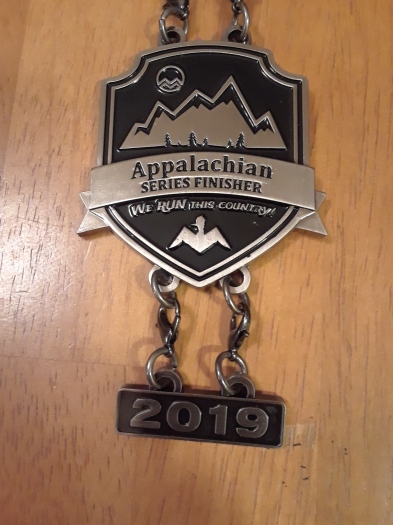
Appalachian series complete!
The Mainly Marathons Appalachian Series was complete. Over the 8 days I ran 213.91 Garmin miles, 209.6 official miles, and 6020 feet of elevation. My total time was 43 hours, 57 minutes, 15 seconds. Would I have done that much running if I stayed home for the week? Not a chance. October 2019 is only the 10th month that I have passed 200 miles in a month, and I cleared that mark in just 8 days! I started this series looking to evaluate my fitness level and give myself some confidence heading into the big races at the end of the year. Mission accomplished! I’m feeling like I can successfully complete the races that I have already signed up for. I week earlier I wasn’t so sure.

8 puzzle pieces strung together
Earlier in this novel I mentioned the extraordinary people that I was running with. In total there were about 25 people that ran all 8 days. Some mixed up the distances, some completed 8 half marathons, and some finished 8 marathons. One ran 50k (31 miles) for all 8 days. Of those that completed at least 26.2 miles every day, I was the youngest at 50 years old. In fact, half of those marathoners were in their 70s. But wait – the amazing facts about this group continue. In West Virginia I ran with world-record holder Angela Tortoricci as she completed her 800th marathon. I was told that another marathoner had just hit 1900 marathons, and Larry Macon was out there every day as well. He’s finished over 2,200 marathons (he owns the world record for number of official marathons completed) and he did his first at age 55. I ran eight days with Nick Nicholson who has completed 270 marathons in a year and will soon finish 1,000 marathons in less than four years. More records. At the Florida race Ed Del Favero completed his 100th marathon for 2019. Also on the courses and finishing 8 half marathons was Stacey Kozel. Stacey may walk with crutches and braces on her legs, but she’s finished 73 half marathons this year, and owns the world record for most half marathons completed with crutches in a month by a female (23). Not all of these people are members of the Marathon Maniacs as I am, but I did some looking around in the group and found that I ran with 7 of the top 11 Marathon Maniacs for marathons completed this year. Marathon Maniacs has a Hall of Fame as well, and I ran with 10 of the 50 Maniac Hall of Famers! Unfortunately I did not realize so much about the people that I was running with while I was on the course with them, but I truly do appreciate the kindness and support that every one of them showed me every day.
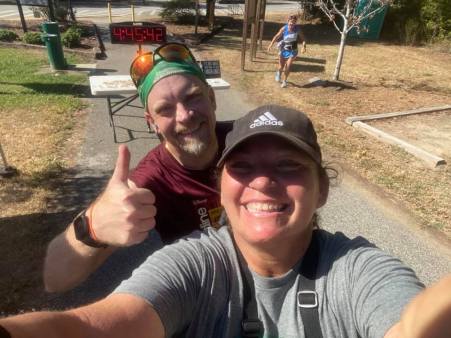
With Stacey Kozel in Alabama
So now I return to training. At a minimum I have nine more races this year: I’m going to be an official pacer for a 10k on November 10th, I’m running the Daytona 100 mile race on December 7th, and then the Savage Seven (7x50K) from December 26th through January first. I may also add the Space Coast marathon again as well as that is one of my favorite races to run.
Overall my experience with Mainly Marathons exceeded all of my expectations. The crew directing the races, the volunteers, the food they provided, the other runners, the variety of courses, and the boost that I was able to give myself just by doing a ton of what I love to do – all of it in one awesome adventure. I’m sure that I will go after another Mainly Marathons series at some point, I just have to save up a little more vacation time!
